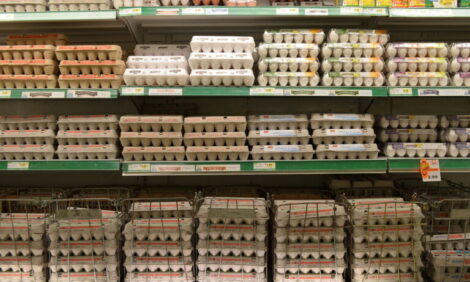



GLOBAL POULTRY TRENDS - Only Two Per Cent of America's Eggs Exported
Exports of table eggs in shell or product forms equate with around 4.5 per cent of global shell egg production. However, for the Americas this figure will be closer to two per cent, according to industry watcher, Terry Evans, in his latest analysis of trends in the egg industries of the Americas.Between 2000 and 2010, global exports of shell eggs expanded by more than one million tonnes to exceed two million tonnes for the first time in 2010 (Table 1). However, it is difficult to identify clear trends as trade figures differ markedly according to source. The export/import trade does not balance because of the time lag in transportation but more importantly because some countries record the trade data differently to others.
During the decade covered by the FAO data, shell egg exports from the Americas rose from 93,000 tonnes to 129,000 tonnes in 2007 but then fell back to around 115,000 tonnes by 2010 showing a 24 per cent rise over 2000. Hence the Americas' share actually declined from 10 per cent to less than six per cent.
Although nearly 110,000 tonnes (96 per cent) of exports was accounted for by five countries, the US, Brazil, Peru, Mexico and Canada; three-quarters of the business was conducted by US exporters alone.
In 2010, the US shipped 86,000 tonnes of shell eggs to nearly 90 countries although some two-thirds went to only four destinations - Canada, (24,000 tonnes), Hong Kong, (20,000 tonnes), the United Arab Emirates (7,000 tonnes) and Mexico (6,500 tonnes). Data presented by the USDA express trade information in millions of dozen eggs and includes exports of egg products expressed as shell egg equivalent. For 2009, total exports were 242 million dozen rising to 258 million dozen in 2010 and 276 million dozen in 2011. However, looking ahead, it is anticipated that exports will be fairly "flat" to 2016 at around 260 million dozen a year with a slight upswing to 277 million dozen in 2021. Throughout the period it is anticipated that exports will represent around 3.5 per cent of total production.
Jim Sumner, President of the USA Poultry and Egg Export Council (USAPEEC), is confident that export markets for both eggs and egg products will continue to grow. For the US, Hong Kong is currently the largest export market for shell eggs followed by Canada but there is a general consensus among US marketers that there is considerable potential to sell more US eggs and products and, to some extent, hatching eggs to the Caribbean and Central and South America.
It appears that the FAO data on Brazil's shell egg exports greatly understates the true picture as another series of figures puts the total in 2009 at 34,000 tonnes, contracting to 25,000 tonnes in 2010 and further to less than 15,000 tonnes in 2011. Angola was the leading purchaser in 2010 accounting for more than half of the total, followed by the United Arab Emirates with 41 per cent.
Shell egg imports into the Americas showed little movement throughout the period 2000 to 2010 at around 68,000 tonnes (Table 2). Just two countries - Canada and Mexico - were responsible for the bulk of the trade.
World trade in dried egg almost doubled between 2000 and 2010 (Tables 3 and 4) reaching 60,000 tonnes (excluding albumen) by the end of the period. Exports from the Americas more than doubled to around 19,000 tonnes entirely as a result of a rise in US shipments from 4,200 tonnes to almost 15,500 tonnes. Again, more recent data puts US exports of all dried egg products in 2011 at around the 18,000 tonnes a year mark.
Imports of dried egg into the Americas are negligible, showing little movement between 2000 and 2010 at around 4,500 tonnes a year.
Worldwide exports of liquid egg have climbed from 144,200 tonnes back in 2000 to 272,700 tonnes in 2010. But exports and imports of liquid egg from and to the Americas changed little during the decade at 21,000 tonnes and 11,000 tonnes respectively (Tables 5 and 6).
More recent data indicates that liquid egg exports from the US were closer to 20,000 tonnes in 2011. In value terms, exports of all forms of processed egg rose by 22 per cent in the first quarter of 2012, primarily as a result of increased sales to the European Union, Mexico, Taiwan and Canada. However, trade with Japan, the single most important market for US egg products, declined by nearly eight per cent.
January 2013














